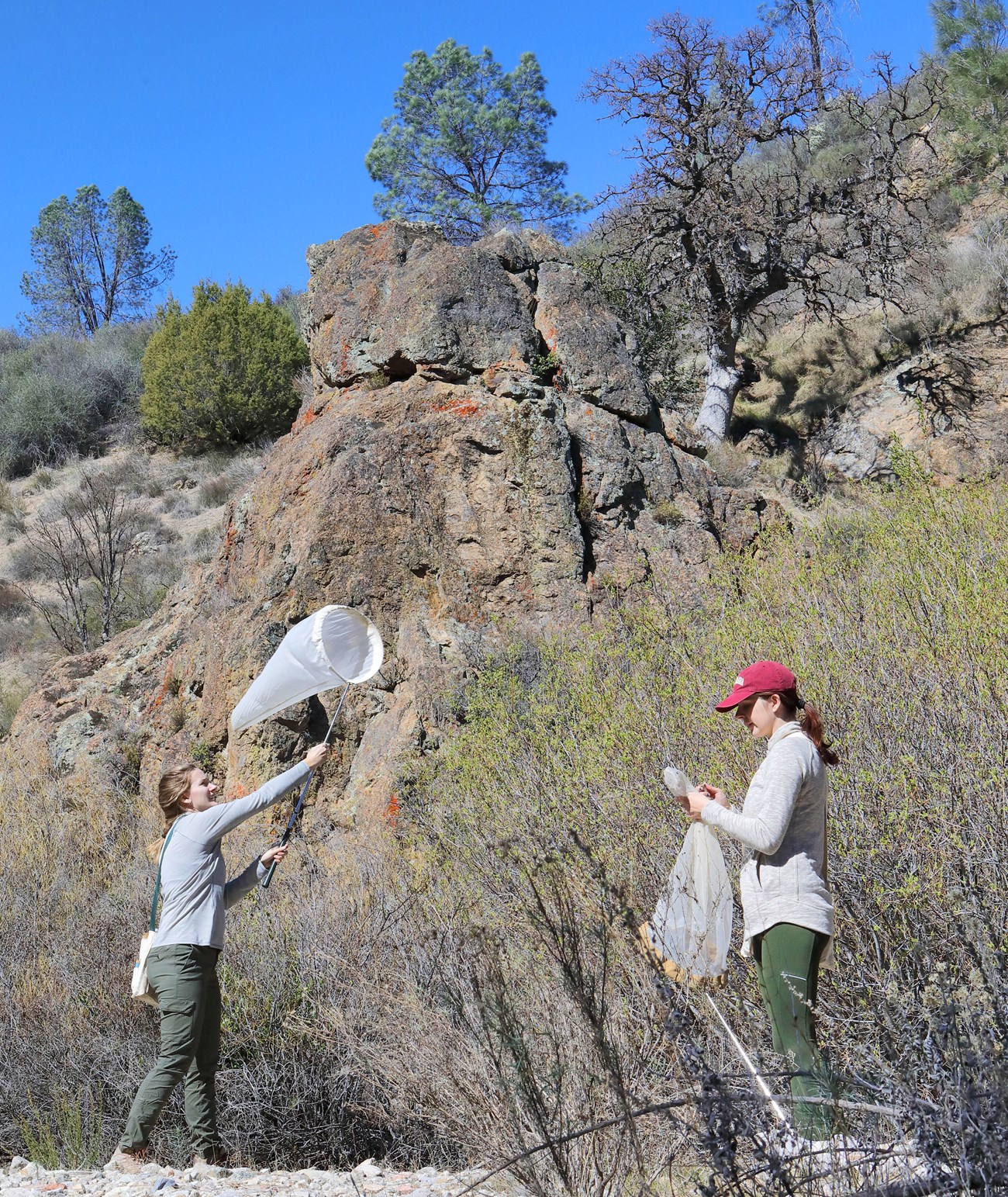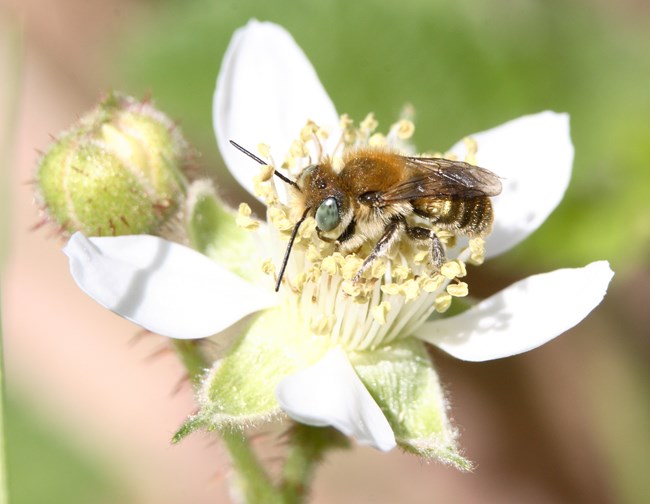Last updated: March 5, 2021
Article
Pinnacles Builds on Earlier Bee Studies with New Surveys in 2020-2021
By Abigail Lehner, 2020-2021 Pinnacles Bee Inventory Lead, Utah State University
February 2021 - Pinnacles National Park has been identified as a global biodiversity hotspot for bees. A remarkable 450 species may be found in its 41.6 square miles. This diverse bee community is incredibly beneficial to the local ecosystem, but also to the surrounding agricultural areas. Native bees substantially contribute to crop pollination and have been seen to forage between both native habitat and agricultural areas. But it is no secret that bees and other pollinators are increasingly threatened by habitat loss, pesticide use, agricultural expansion, invasive species, and climate change. Understanding how to effectively address these threats requires us to be able to answer questions like, what bees occur where? How is their distribution changing over time? How do different species use different habitats? What plant species do they prefer? As a result, studying bees is more important than ever.

NPS / Paul G. Johnson
Pinnacles is one of the only natural areas with large bee surveys conducted regularly across decades, with studies conducted in 1997, 1998, 2002, 2011, and 2012. With each new survey, scientists can do ever more valuable comparisons with historical data. So last year, researchers from Utah State University initiated a new round of surveys. We sampled 11 sites in the park from mid-February through early July in 2020 and will repeat this sampling in 2021.

NPS / Paul G. Johnson
We collected 20,531 bee specimens representing 50 genera. 83% of the bees collected represented eight genera: Andrena, Ceratina, Halictus, Hesperapis, Lasioglossum, Melissodes, Osmia, and Panurginus. All of the genera collected were found in previous years, but we did have some rare finds. We added new species to the park list, like Osmia subaustralis, Megachile aff. subnigra, and Megachile rotundata. We also collected a few species that had only been collected one other time in the park like Colletes californicus, Panurginus aff. occidentalis, and Diadasia consociata, showing that some rare species are still in the park.
We are excited to continue to sample in the park this year and see what other bee species can be added to the inventory. We also look forward to continuing our data analysis, examining bee preferences for the park’s native and invasive plants, and figuring out how the bee community at Pinnacles has or hasn’t changed since 1997.
For more information
- Contact Pinnacles National Park Wildlife Biologist Paul Johnson or Utah State Graduate Student Abigail Lehner
- Bees of Pinnacles National Park
- Pacific Coast Science and Learning Center: Bees
